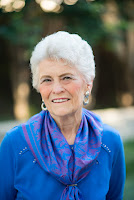From Suffragist to Barbie Doll by Martha Rogers
I had never heard of Ida Wells until I read where Mattel had made a doll in her image for their "Inspiring Women" series. I thought that to be a wonderful tribute during Black History month and wanted to learn more about her. What I learned is amazing, and I'm wondering why more hasn't been written about her.
Ida B. Wells entered this world as a child of slave in Holly Springs, Mississippi in during the Civil War in 1862. During the war, she and her parents were emancipated. She grew up with her parents, but at the age of 16, she lost both her parents and youngest brother to the 1878 yellow fever epidemic. She then took over caring for her remaining family to keep them together with the help of her grandmother.
She later moved to Memphis, Tennessee where she became a teacher, but not long after the move, she co-owned and wrote for a newspaper there, Memphis Free Speech and Headlight. Her focus centered on incidents of racial segregation and inequality.
One of her main targets became the custom of lynching which she documented in articles through pamphlets like Southern Horrors: Lynch Law in all its Phases. She investigated the
claims of whites who said that lynching was a practice reserved for black criminals. Wells exposed lynching as a barbaric way of intimidating and oppressing African Americans in the south who had become a threat to the economics of the white man.
Because of her writings, a white mob destroyed her newspaper office and press. As a result, she moved to Chicago. In 1893, she boycotted the World's Columbian Exposition along with other boycotters who claimed the committee locked out African Americans and portrayed them in a negative light.
While living in Chicago, she met and married Ferdinand Barnett, a well known African American lawyer in 1895. After her marriage, she continued her work in exposing racial inequality while at the same becoming a mother to four children. Throughout her career, she balanced her activism with her home life.

Although she was in Niagara Falls for the founding of the National Association for the Advancement of Colored People (NAACP), her name is not mentioned as an official founder. Late in her career Wells-Barnett focused on urban reform in the growing city of Chicago. She died March 25, 1931 at the age of 68.
Ida has been the recipient of numerous awards and honors since that time. These included schools and streets being named for her and being posthumously honored with a Pulitzer Prize special citation in 2020 for her "outstanding and courageous reporting on the horrific and vicious violence against African Americans during the era of lynching."
She is also honored by a monument and a mosaic. The monument is in Chicago.
Martha Rogers is a multi-published author and
writes a weekly devotional for ACFW. Martha and her husband Rex live in
Houston, Texas where they are active members of First Baptist Church. They are
the parents of three sons and grandparents to eleven grandchildren and
great-grandparents to six. Martha is a retired teacher with twenty-eight years
teaching Home Economics and English at the secondary level and eight years teaching
Freshman English at the college level. She is a member of ACFW, ACFW WOTS
chapter in Houston, and serves as President of the writers’ group,
Inspirational Writers Alive.
I









Thanks for posting! And thanks for highlighting another strong woman in history. I would have liked to meet any of the women who are highlighted in this blog, and also Eleanor Roosevelt, who had a reputation of saying what she thought in clever ways. I like one attributed to her, "Do one thing every day that scares you."
ReplyDeleteI had never heard of Ida Wells before and was truly fascinated by how strong she was in a tie when that wasn't the thing for women to be. I love finding tidbits like this and researching further. Eleanor Roosevelt was one of my favorites. I remember her as the First Lady. Thanks for stopping by.
Deleteoh but thank you for sharing this post. I love to read about strong women in history. I love reading about Kate Warne. 1st pinkerton lady. there was a gutsy and strong lady.
ReplyDeleteKate Warne was another one of those trail blazers for us today. Thanks for stopping by.
DeleteWhat a great article. I would have liked to have meet Eleanore Roosevelt.
ReplyDeleteI never met her, but I do remember her as first lady when I was a child. She was a strong woman with a stubborn will for those things she believed in as good for the people. Although not as attractive as some of the other presidential wives, she was one of the best. Thanks for stopping by.
ReplyDeleteGreat article. My great-grandfather lived in Chicago during her time. I wonder if they met.
ReplyDeleteWonderful article on a worthy woman. Although I already knew about Ida B. Wells, it was a good reminder of her strength and focus. Ida and all women who fought against the system for changes in inequitable social constructs deserve our gratitude as we benefit from their struggles today.
ReplyDelete